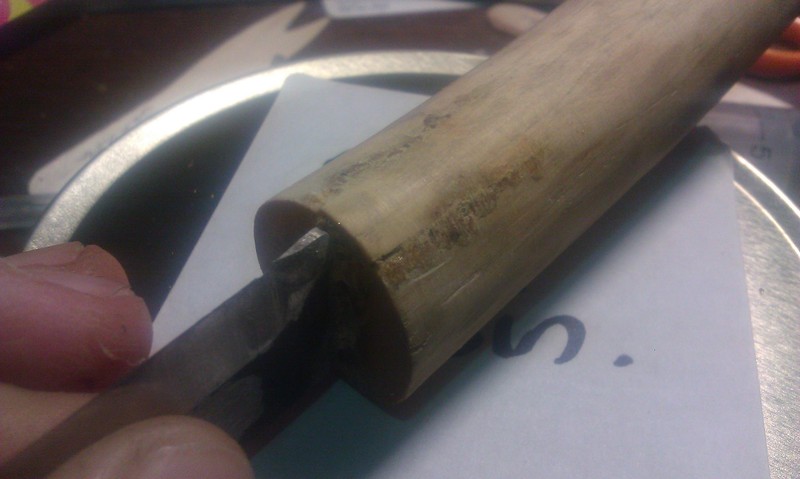I've been playing around with this knife blade (Brusletto troll knife) for several months now. I started the handle using a piece of grey willow. It was a snug fit, but there was a small gap round round the handle and I was worried about liquid getting in there if I wash the knife. So, having slowly collected pine resin every time I go for a walk near pine trees. The plan was simple, melt the pine resin, inject it into the cavity while it's still liquid, stick the tang in the handle, await the resin to cool. Relax.
That was the theory.
The actual reality was that the injection of the liquid resin didn't work, it just cooled far far far to fast. Then when I put the handle in and gave it a gentle tap on with a mallet, the handle split. I tried making it up a little with the pine resin. But it's not quite right. Am rather miffed, after all this work, it goes and splits on the final stage.
Not sure what to do next. I can use the blade as is, just don't want to submerge it in water.
The big positive that Is coming from this is that I am reaching a conclusion on the shape of handle and length of blade that I like most, ready to commission my dream knife.
Onward.
Julia
That was the theory.
The actual reality was that the injection of the liquid resin didn't work, it just cooled far far far to fast. Then when I put the handle in and gave it a gentle tap on with a mallet, the handle split. I tried making it up a little with the pine resin. But it's not quite right. Am rather miffed, after all this work, it goes and splits on the final stage.
Not sure what to do next. I can use the blade as is, just don't want to submerge it in water.
The big positive that Is coming from this is that I am reaching a conclusion on the shape of handle and length of blade that I like most, ready to commission my dream knife.
Onward.
Julia

